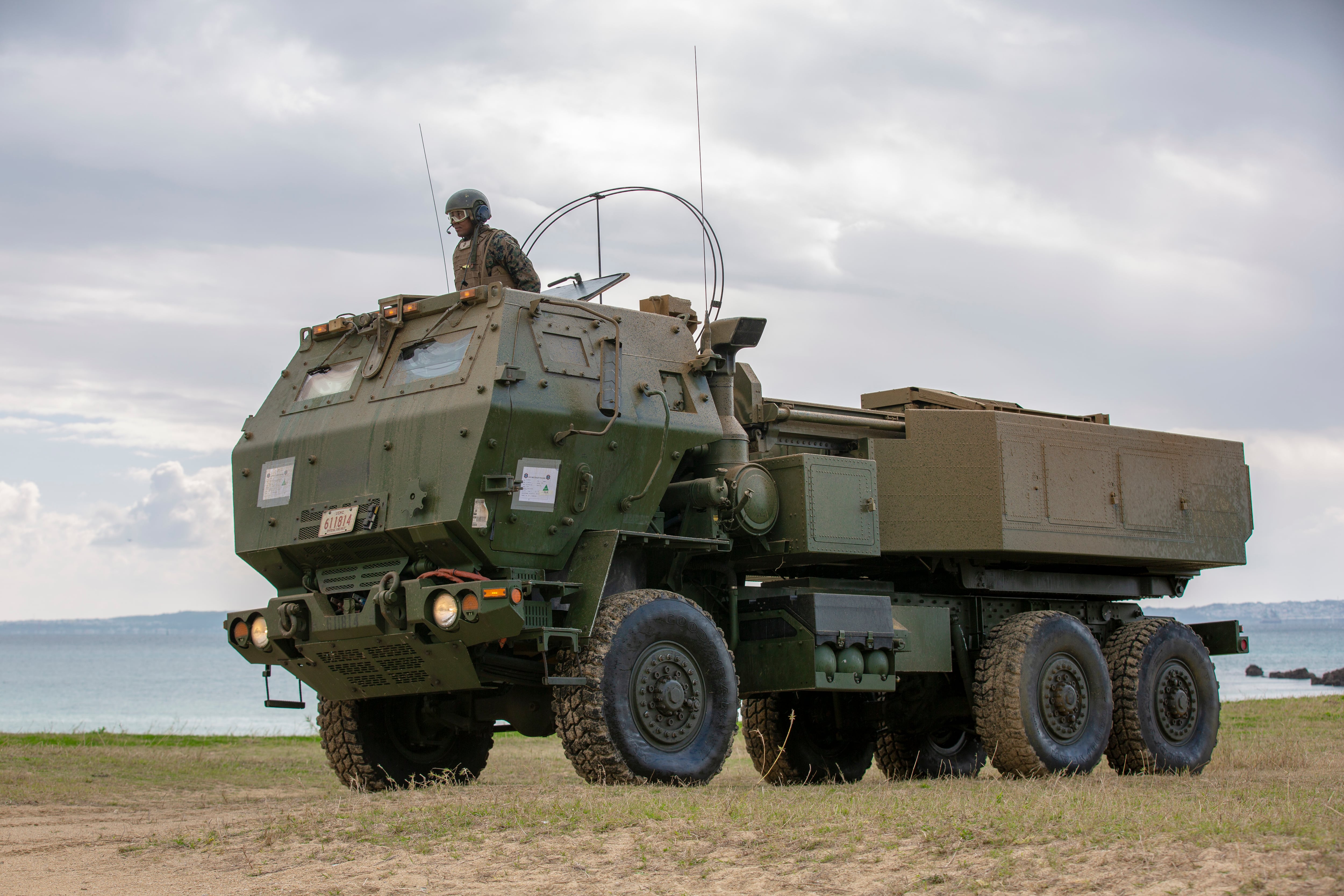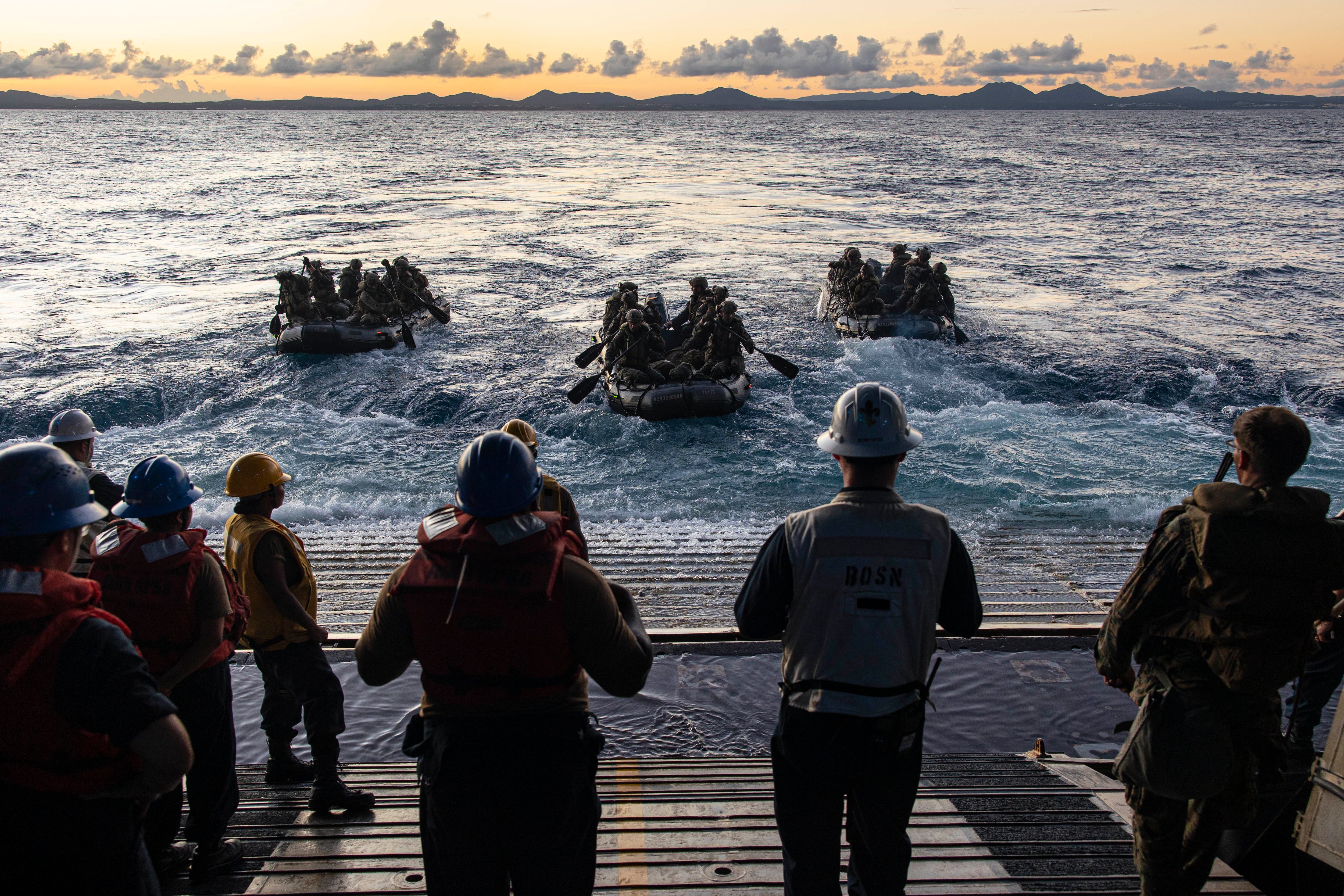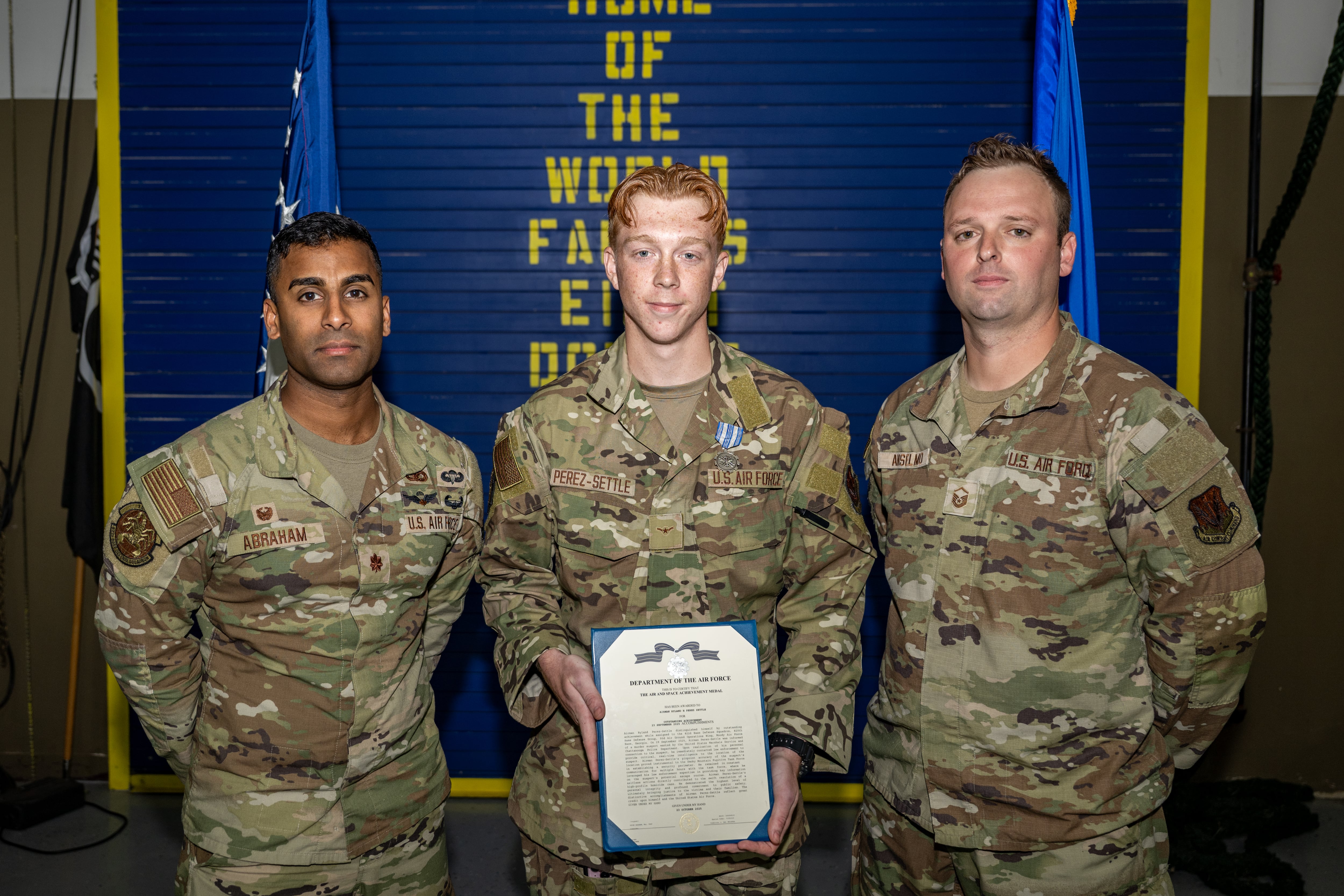“We have been here before,” Gen. David Berger wrote in his forward to “A Concept for Stand-in Forces,” in December 2021.
These five words, the first sentence of the preamble for the development of stand-in forces, give the false impression that the Marine Corps effectively would address the practical difficulties of adding the new capability.
Left unsaid is the inconvenient truth that historically sound and proven processes would be tossed aside in the blind rush to stand up an unproven, experimental capability.
Marine Corps force structure and required equipment would be cut dangerously to pay for stand-in forces.
Regardless, the Marine Corps “has been here before” when it comes to the seamless and non-injurious fielding of new capabilities, the best example being Marine defense battalions.
RELATED

The process the Marine Corps used to fund, man and equip defense battalions and the visionary insight exhibited to evaluate their importance offer a good case study that should have been followed for the development of stand-in forces.
In many respects, defense battalions and stand-in forces are strikingly similar. In other respects, they are starkly different, especially the approaches used in development.
Marine defense battalions
Let’s review how the seven defense battalions formed prior to World War II were funded and fielded.
The Marine Corps was quick to realize that an inevitable war with Japan would require specially trained and equipped forces to defend America’s string of far-flung outposts in the Pacific, specifically Midway, Wake, Johnston, Palmyra islands and Samoa.
Guam also was considered an essential location but deemed too near Japanese possessions to be defendable.
Seeing an opportunity to increase the end-strength of the Marine Corps, Commandant Maj. Gen. Thomas Holcomb asked Congress for additional funds to stand up new defense battalions, manned and equipped for operations in what the Marine Corps would today term “contested” areas.
Each battalion would increase the size of the Marine Corps by about 900 troops, not an insignificant number since the strength of the Corps was only 19,432 at the time.
The battalions would be equipped with state-of-the art weapons and equipment, including anti-aircraft batteries, seacoast gun batteries, anti-aircraft machine guns batteries and specialized equipment such as searchlights, sound-ranging devices, more reliable radios and radar, according to “Condition Red: Marine defense Battalions in World War II,” by Maj. Charles D. Melson.
In late 1939, the Marine Corps stood up its first defense battalion. By March 1941, the Corps had formed seven battalions.
The first battalion deployed to Midway during September 1940. By the time the Japanese attacked Pearl Harbor, other defense battalions, and detachments thereof, had deployed to Guantanamo Bay, American Samoa, Iceland, Pearl Harbor and Johnston, Palmyra and Wake Islands.
Some of these battalions and detachments soon would be attacked by the Japanese.
Those at Pearl Harbor would come into action too late on Dec. 7, 1941, to make much of a difference.
The detachment at Wake Island would be forced to surrender on Dec. 23, 1941, due to its isolation and the inability of U.S. forces to quickly reinforce the garrison.
The battalion (reinforced) on Midway would be hit hard by a Japanese air attack on June 2, 1942, but would not be overrun, entirely due to the unexpected presence of a large U.S. Navy aircraft carrier task force nearby.
The detachments on Johnston and Palmyra islands would be harassed by submarine shelling after Pearl Harbor but would never be seriously threatened.
By war’s end, the Marine Corps had stood up 20 defense battalions, almost all of them deployed throughout the Pacific but mainly in supporting, air defense roles.
Wake and Midway were proof enough that small, isolated units could not survive unless quickly reinforced.
These battalions played an important, but not a decisive, role in America’s ultimate defeat of Japan.
Holcomb was as astute as he was prescient. He knew it was his duty to convince Congress that the nation needed this capability.
He made his case and Congress quickly approved the necessary funding. As a result, the Marine Corps was able to stand up the battalions without drawing down on existing force structure or equipment.
Holcomb also knew that the battalions were important but not paramount to winning the expected war with Japan.
The new stand-in forces
Similarities between stand-in forces and defense battalions are easy to spot.
The defense battalions relied on state-of-the art technologies to accomplish missions, as will stand-in forces. Nascent radars, sound-ranging equipment and reliable communications allowed the battalions to identify and engage the enemy as far forward as possible, thus extending the eyes and ears of the fleet.
And like stand-in forces, the defense battalions had to integrate into a multifaceted command structure.
Perhaps the biggest similarity is also the elephant in the room: isolation and vulnerability to detection and defeat.
The defense battalions could not persist in the “contested” areas, when strongly threatened, without immediate reinforcements.
Navy and Marine Corps leadership learned this lesson after the capitulation of Wake and the narrow escape of Midway. Marine Corps leadership needs to relearn this lesson or face the reality of unnecessary casualties in the “contested” littorals.
But all similarities end when the process used to stand up the defense battalions in 1939-1941 and stand-in forces of today are examined. The paths followed then and now are strikingly different and disturbing.
The defense battalions were additive to existing Marine Corps force structure. Their manning and equipping were fully funded by congressional appropriations.
Stand-in forces are being funded by gutting necessary combat capabilities, such as infantry, aviation, engineers, armor and artillery.
To field this narrowly focused, experimental capability, the Marine Corps emasculated the combat power of Marine air-ground task forces, principally the Marine expeditionary forces.
The MEFs essentially are the bill payers for stand-in forces. As a result, the MEF’s capabilities to support major theater of war contingencies in Korea, Europe, the Middle East and elsewhere have been seriously degraded.
A second difference centers around wargaming, experimentation and lessons learned.
The operational concepts for defense battalions were mature by 1938. Marines had been training to defend advanced bases since 1914.
Moreover, Quantico, Virginia, had been teaching a 10-month course on the art of base defense, “stressing the importance of coordination among aviation, antiaircraft and artillery, Melson wrote.
Stand-in forces are being fielded under an immature concept, unvalidated by rigorous war-gaming and experimentation.
But the darkest difference is how stand-in forces are being viewed by Marine Corps leadership.
The defense battalions were always seen as important to the war effort. They were never considered the Corps’ raison d’être, or reason for being.
But stand-in forces are touted as crucial to “reinvigorate our role as America’s forward sentinels” — ostensibly a pursuit so important that the Marine Corps is willing to mortgage its future on an essentially regionally focused, one-dimensional capability.
Proceeding along the course currently charted will destroy the Corps’ capability to fight and win across the spectrum of conflict, in “every clime and place.”
Yes, we have been here before.
Marine defense battalions were funded, manned and equipped the right way and evaluated correctly.
We should have learned these lessons before sacrificing essential structure and equipment on the altar of expeditionary advanced base operations.
The Marine Corps needs to relook its approach before more damage is done. Imitating Holcomb’s foresight and perspective would be a great place to start.
Brig. Gen. Jerry C. McAbee is a career artillery officer. He was the chief-of-staff of the Marine Corps Combat Development Command at Quantico, Virginia, for three years. His father, also a retired Marine, was a gunner in the anti-aircraft battery on Johnston Island when the Japanese attacked Pearl Harbor on Dec. 7, 1941.





